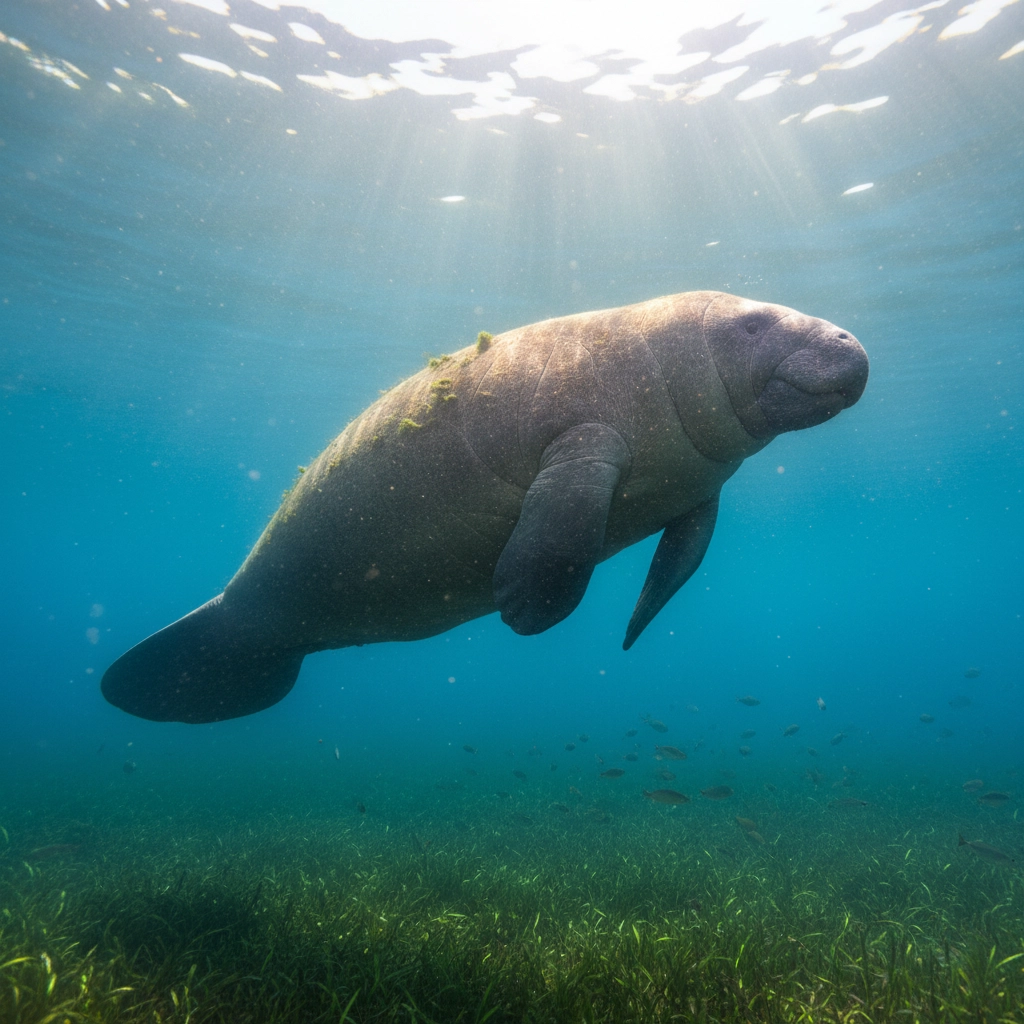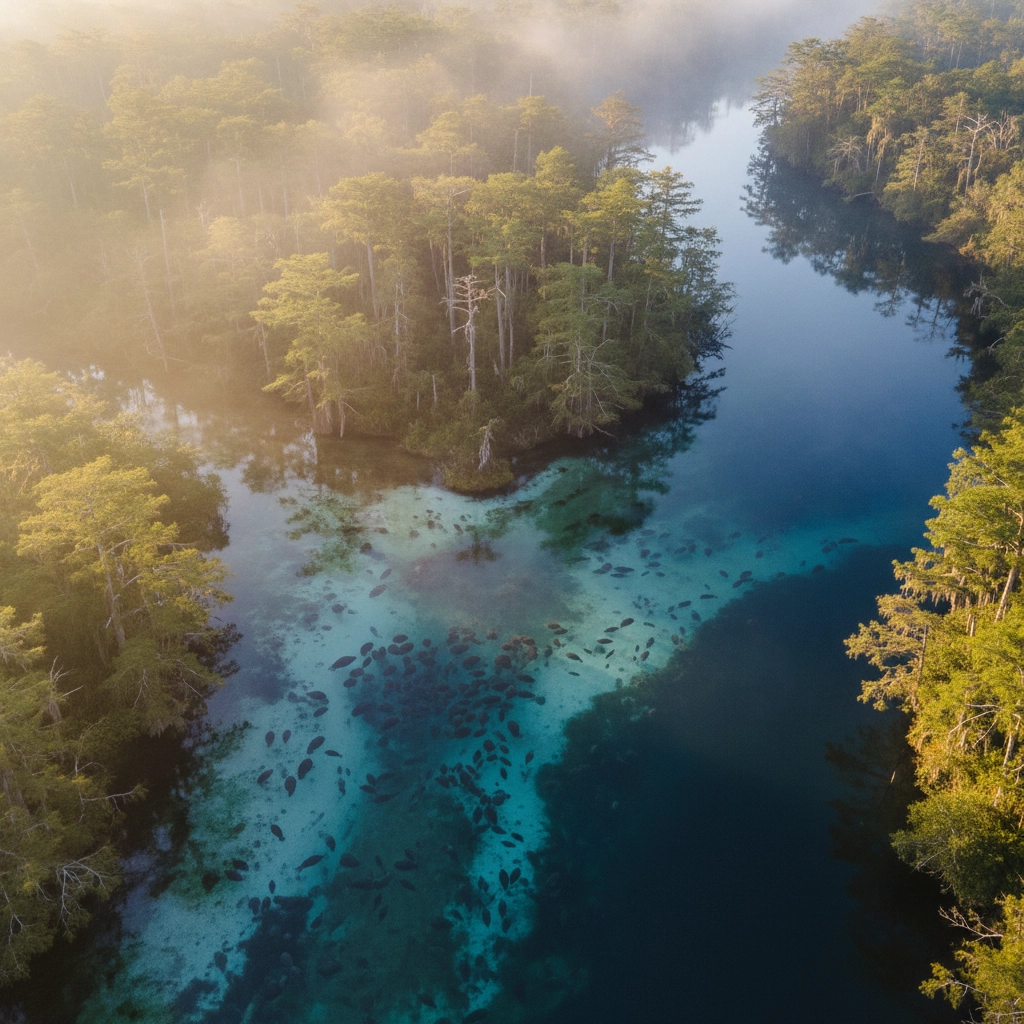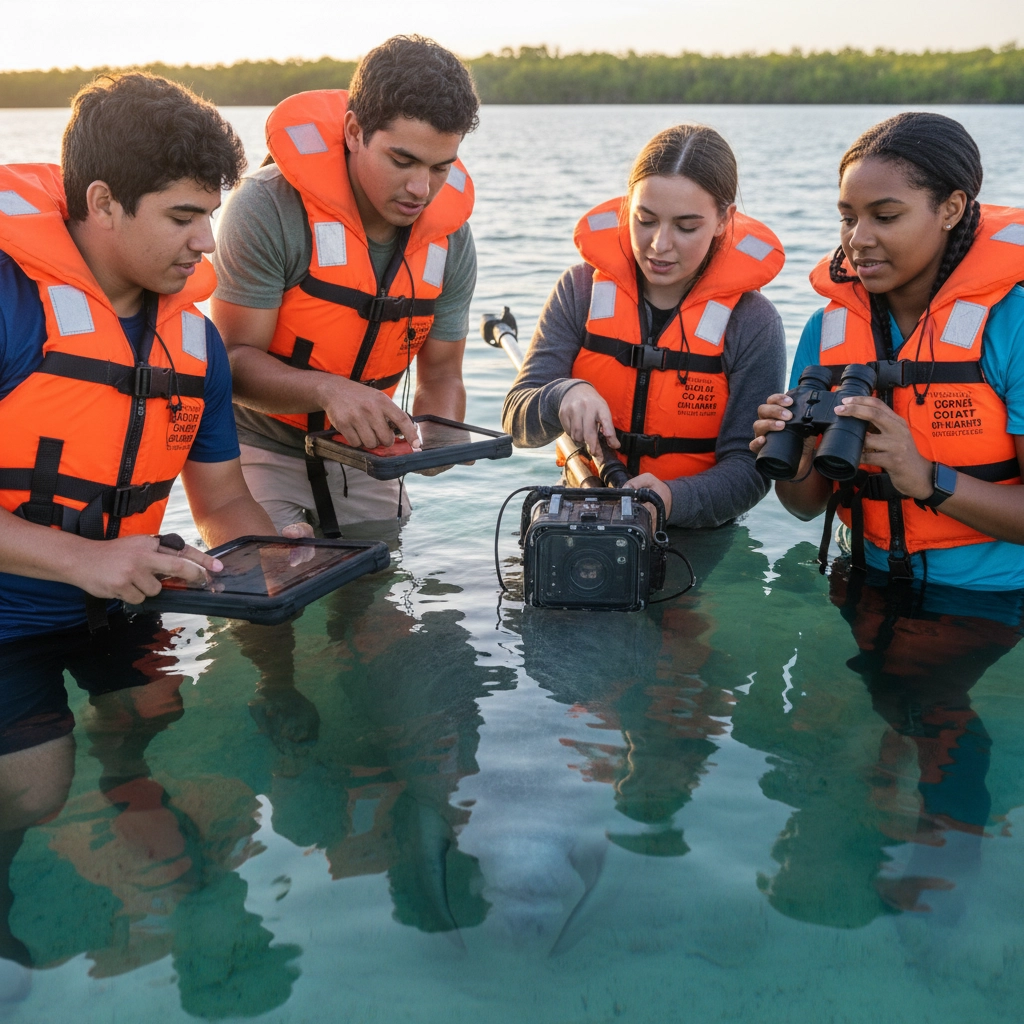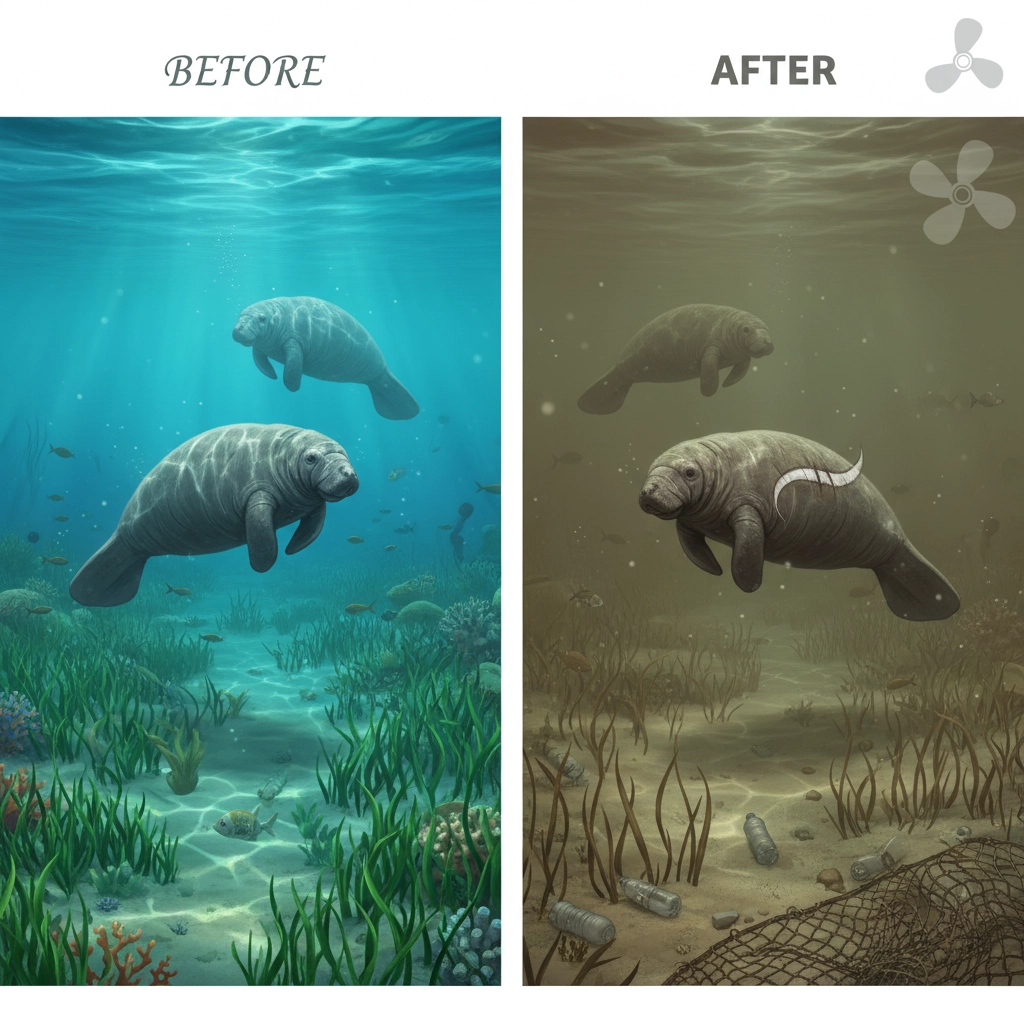Manatee Migration Mysteries: Tracking Gentle Giants for Science
- Caleb Mullenix
- Oct 27
- 4 min read
Understanding manatee migration patterns represents one of the most compelling opportunities for students to engage in real-world scientific research while contributing to critical conservation efforts. When planning educational expeditions to Crystal River, educators must recognize that these gentle marine mammals offer unparalleled learning experiences that extend far beyond simple wildlife observation.
The Science Behind Seasonal Migration Patterns
Establish your expedition's scientific foundation by understanding the remarkable consistency of manatee migration behaviors. Recent research tracking 48 satellite-tagged manatees reveals that 87% of these marine mammals undertake significant seasonal journeys, ranging from short distances of 50-150 kilometers to extensive migrations exceeding 400 kilometers.
Document these key migration patterns for your students:
Autumn migrations occur eastward from August through December as temperatures drop
Spring migrations move westward from February through August as waters warm
Manatees demonstrate strong fidelity to both warm-season and winter ranges across multiple years
Crystal River serves as a critical thermal refuge during Florida's cooler months
Ensure your students understand that these patterns reflect evolutionary adaptations essential for manatee survival, as these mammals cannot tolerate water temperatures below 68°F for extended periods.

Revolutionary Tracking Technologies Students Can Learn About
Prepare your students to understand the sophisticated methods scientists employ to unravel migration mysteries. Modern manatee research utilizes multiple complementary approaches that demonstrate how technology advances scientific understanding.
Satellite Telemetry Methods
Explain to students how researchers calculate mean daily locations from recorded GPS coordinates to map precise migration routes. Scientists consider locations as "stopovers" when manatees remain in specific areas for seven or more consecutive days, providing crucial data about habitat preferences and seasonal needs.
Acoustic Identification Breakthroughs
Introduce students to groundbreaking bioacoustic research that identifies individual manatees through their unique vocalizations. Scientists analyze over 375,800 two-minute audio clips using machine learning algorithms to recognize individual "voices" - similar to distinguishing human speakers by their distinctive tones and speech patterns.
This innovative approach proves particularly valuable in Crystal River's often murky waters where traditional visual surveys face significant limitations. Students can participate in acoustic monitoring projects, learning how underwater recordings contribute to population assessments and behavioral studies.
Photo-Identification Techniques
Teach students how researchers document unique scar patterns, injuries, and physical characteristics to track individual manatees across multiple years. This method allows scientists to monitor survival rates, reproduction success, and long-term movement patterns without invasive procedures.

Crystal River's Critical Role in Migration Networks
Emphasize Crystal River's significance as a premier warm-water refuge that attracts manatees from throughout Florida's west coast. The area's natural springs maintain consistent temperatures around 72°F year-round, creating ideal conditions for detailed behavioral observations and research participation.
Guide students to understand that Crystal River functions as:
A thermal sanctuary where manatees aggregate during temperature drops
A research hub where multiple scientific studies occur simultaneously
A conservation success story demonstrating effective protection measures
A living laboratory where students can observe natural behaviors
Plan your expedition timing carefully, as peak manatee presence typically occurs from November through March when cooler temperatures trigger migration responses.
Student Participation in Real Research Projects
Structure meaningful research experiences that allow students to contribute to actual scientific databases. Coordinate with local research organizations to ensure student activities align with ongoing studies and produce valuable data.
Citizen Science Opportunities
Organize students to participate in:
Population monitoring through systematic observation protocols
Behavioral documentation using standardized recording methods
Water quality testing that supports habitat assessment studies
Acoustic data collection contributing to vocalization libraries
Data Collection Protocols
Establish clear procedures for student researchers:
Train students in proper observation techniques before field work begins
Provide standardized data sheets that match professional research formats
Emphasize accuracy and consistency in all recorded measurements
Review data collection methods to ensure scientific validity

Conservation Challenges Students Must Understand
Prepare students to comprehend the serious threats facing manatee populations. Recent data indicates that no statewide survey since 2001 has exceeded the count of 3,276 manatees, while 2021 marked the worst year on record for manatee mortality.
Address these critical conservation issues:
Habitat degradation from coastal development and pollution
Seagrass loss eliminating primary food sources in areas like Indian River
Boat strikes causing significant injury and mortality
Water quality decline affecting both manatees and their prey species
Emphasize that student research contributes directly to conservation efforts by providing essential population and behavioral data that informs protection strategies.
Designing Effective Migration Study Expeditions
Structure your Crystal River expedition to maximize both educational value and research contribution. Begin planning at least six months in advance to coordinate with research organizations and secure necessary permits.
Pre-Expedition Preparation
Ensure comprehensive preparation through:
Background research assignments on manatee biology and ecology
Data collection training using practice scenarios and mock studies
Safety protocol instruction for all aquatic activities
Equipment familiarization with research tools and recording devices
Field Work Organization
Organize student teams with specific responsibilities:
Observation teams focusing on behavioral documentation
Data recording teams managing measurement and timing protocols
Equipment teams maintaining research tools and safety gear
Communication teams coordinating between research groups

Integrating STEM Learning with Conservation Service
Connect migration research to broader STEM concepts while emphasizing conservation service opportunities. Students gain practical experience in biology, chemistry, physics, and mathematics through real-world applications.
Interdisciplinary Connections
Demonstrate how migration studies incorporate:
Biology through anatomy, physiology, and behavioral ecology
Chemistry via water quality analysis and nutritional studies
Physics using acoustic principles and GPS technology
Mathematics through statistical analysis and population modeling
Service Learning Components
Engage students in meaningful conservation service:
Habitat restoration projects supporting seagrass recovery efforts
Community education programs sharing research findings with local groups
Data analysis support assisting researchers with information processing
Conservation advocacy developing presentations for policy makers
Measuring Expedition Success and Impact
Evaluate expedition effectiveness through multiple assessment methods that demonstrate both learning achievements and research contributions. Document student growth in scientific thinking, conservation awareness, and collaborative skills.
Student Learning Outcomes
Assess student development in:
Scientific methodology application and understanding
Conservation awareness and environmental stewardship
Data analysis skills and interpretation abilities
Collaborative research techniques and teamwork
Research Contribution Value
Measure expedition impact through:
Data quality assessments from partner research organizations
Publication acknowledgments in scientific papers and reports
Database contributions to long-term monitoring programs
Conservation outcomes influenced by student-collected information

Establishing your students as active participants in manatee migration research transforms traditional field trips into meaningful scientific expeditions that contribute to conservation efforts while developing critical STEM skills. Through carefully planned Crystal River expeditions, students engage directly with cutting-edge research methods, contribute valuable data to ongoing studies, and develop lasting connections to marine conservation that extend far beyond the classroom experience.



Comments